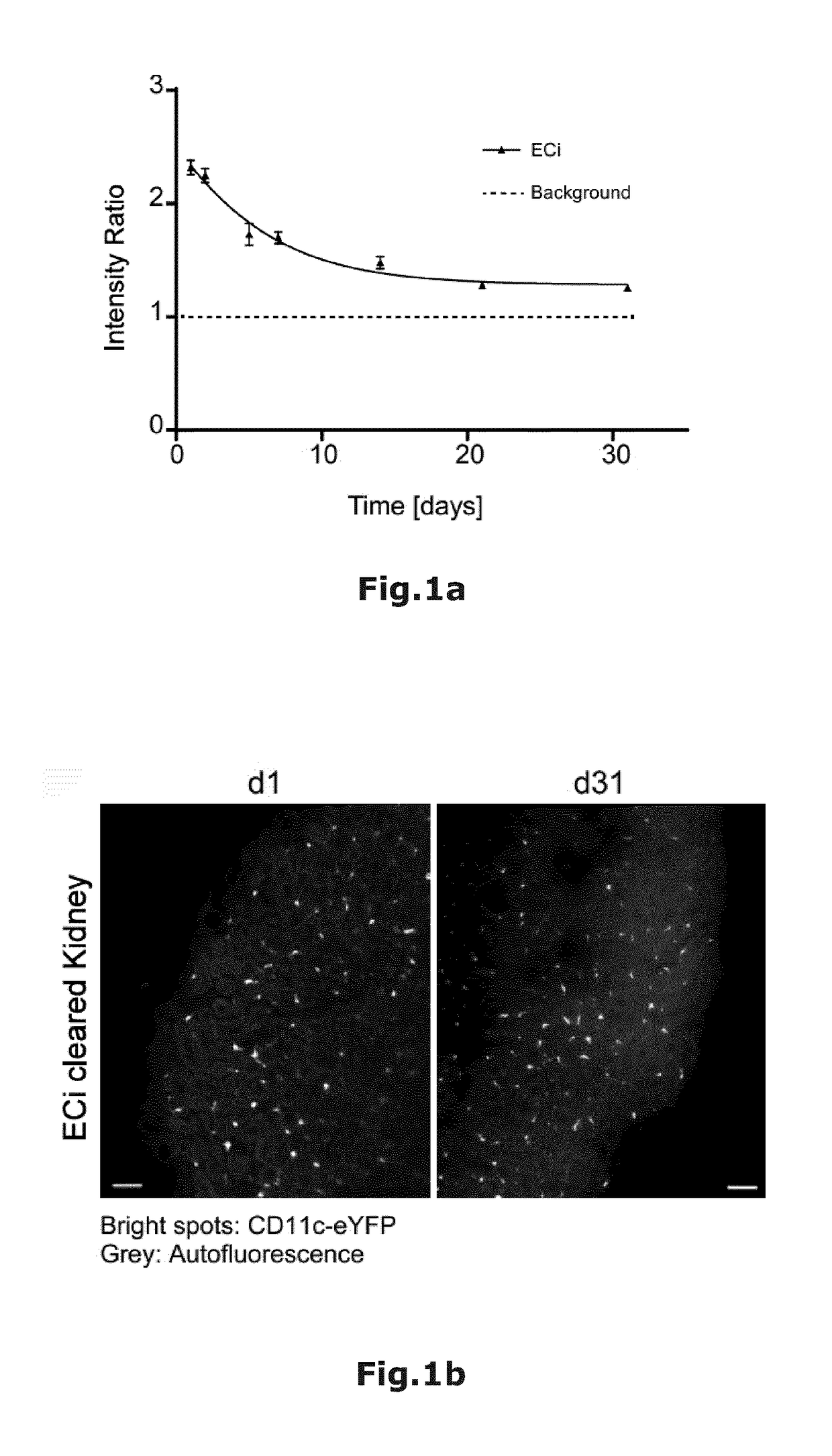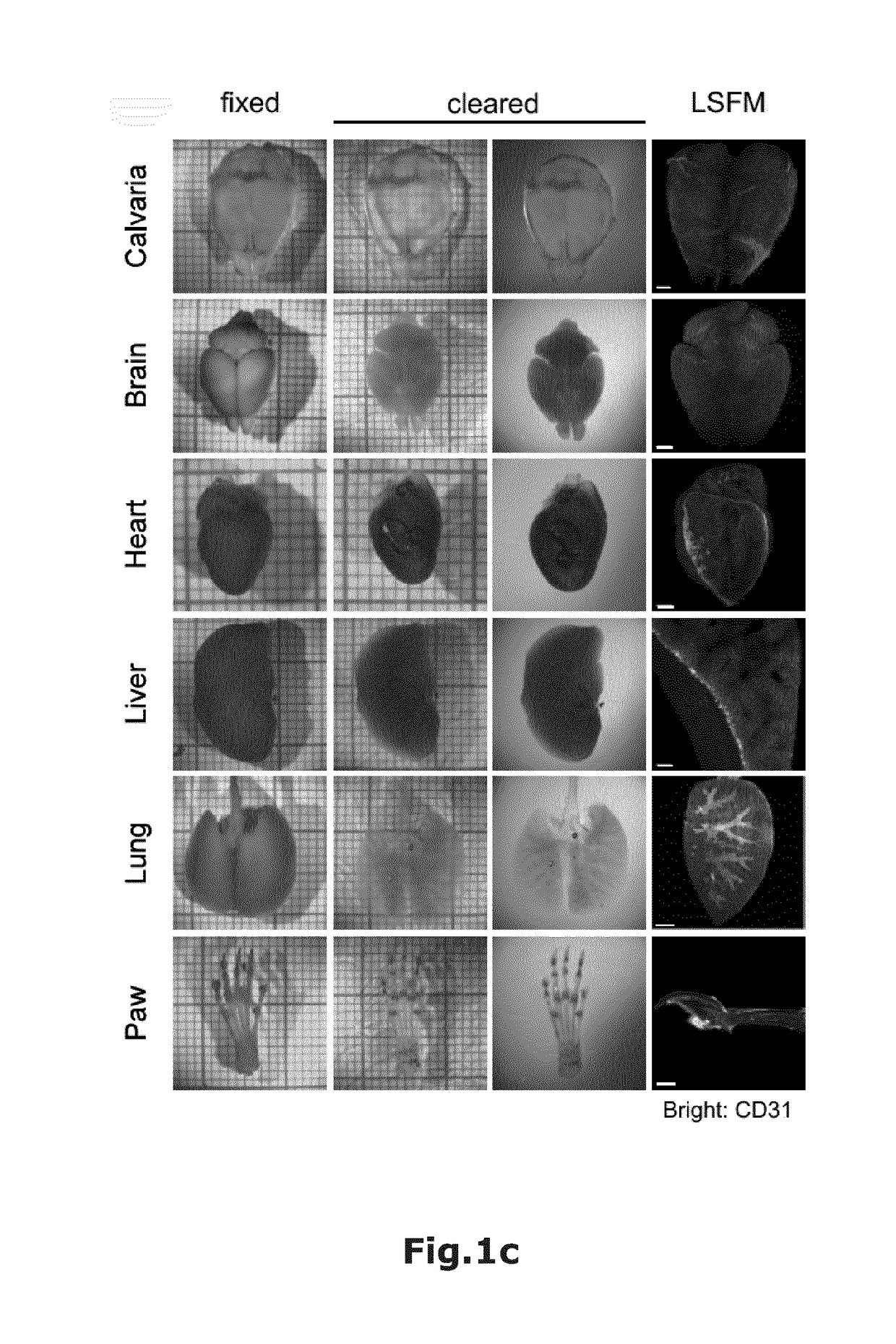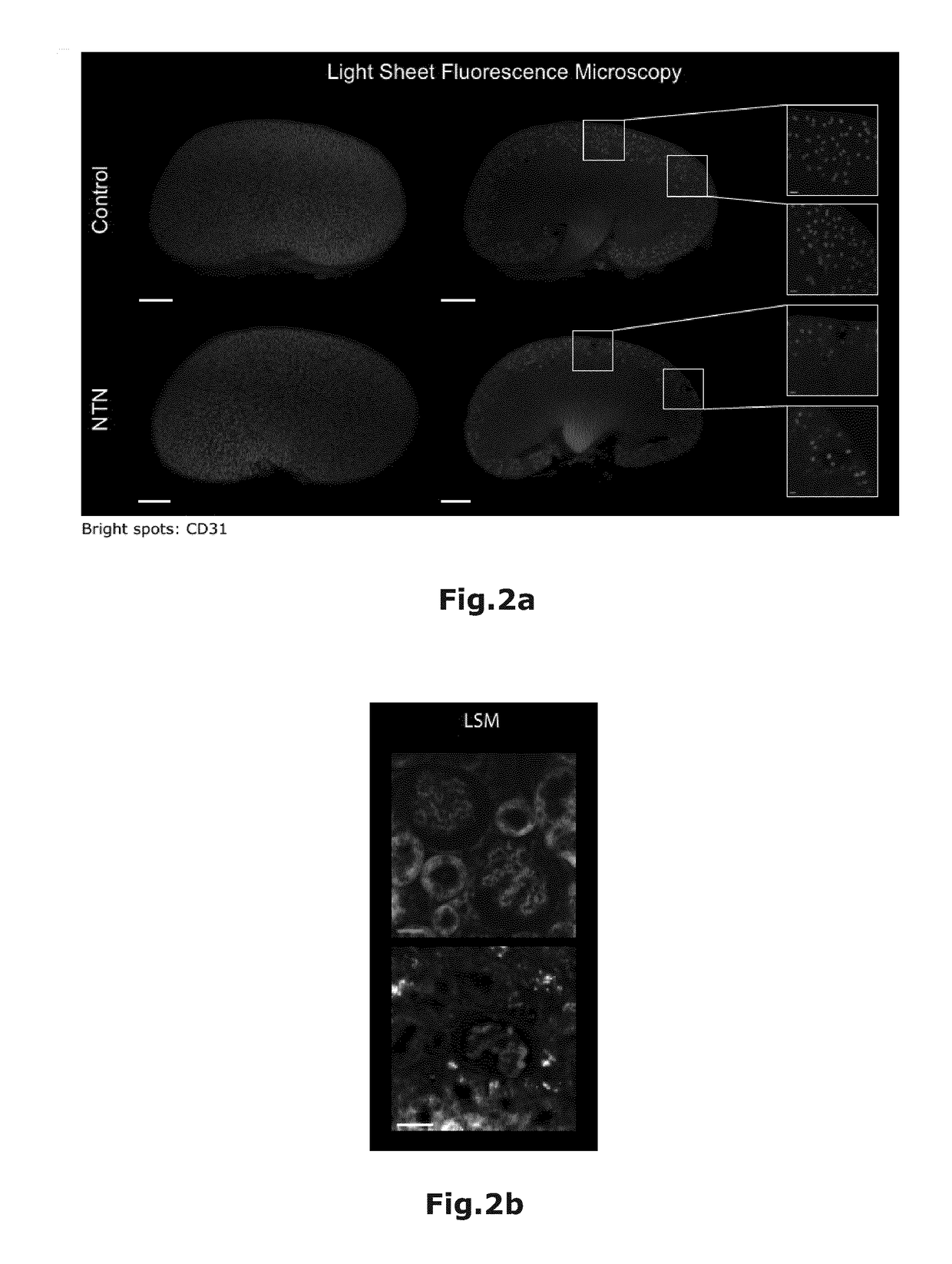Non-hazardous optical clearing of biological samples
- Summary
- Abstract
- Description
- Claims
- Application Information
AI Technical Summary
Benefits of technology
Problems solved by technology
Method used
Image
Examples
examples
[0026]Material and Methods
[0027]1. Antibody staining and sample fixation: 8 to 12 weeks old female mice (CD11c-eYFP, CX3CR-eGFP, Catchupivm) were injected i.v. with 10 μg per mouse CD31-AF647 (Biolegend, Cat# 102516) in PBS (total volume 150 μl) and killed by CO2 10 min after injection.
[0028]Immediately after killing mice were transcardially perfused with 15 ml of cold PBS / 5 mM EDTA and perfusion fixed with 15 ml of cold 4% PFA, pH=7.4. After perfusion organs were removed and post fixed in cold 4% PFA pH=7.4 for 2-4 h (according to the different organs→bones 4 h, all other organs 2 h) at 4-8° C.
[0029]2. Sample dehydration and Clearing: According to the organs different incubation times and Ethanol (EtOH) concentrations (in vol.-%; all with adjusted pH=9; surfactant in vol.-%) for sample dehydration are used:
Organ30% EtOH50% EtOH70% EtOH2x 100% EtOHBrain+2% Tween20+2%+2% Tween20+2% Tween2012 h Tween2012 h 12 h 12 h Lung—4 h4 h4 hHeart—4 h4 h4 hKidney—4 h4 h4 hLiver—4 h4 h4 hSpleen—4 ...
PUM
 Login to View More
Login to View More Abstract
Description
Claims
Application Information
 Login to View More
Login to View More - R&D
- Intellectual Property
- Life Sciences
- Materials
- Tech Scout
- Unparalleled Data Quality
- Higher Quality Content
- 60% Fewer Hallucinations
Browse by: Latest US Patents, China's latest patents, Technical Efficacy Thesaurus, Application Domain, Technology Topic, Popular Technical Reports.
© 2025 PatSnap. All rights reserved.Legal|Privacy policy|Modern Slavery Act Transparency Statement|Sitemap|About US| Contact US: help@patsnap.com



